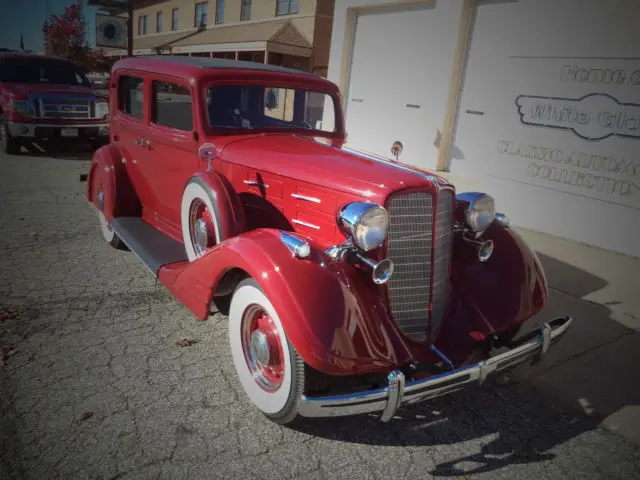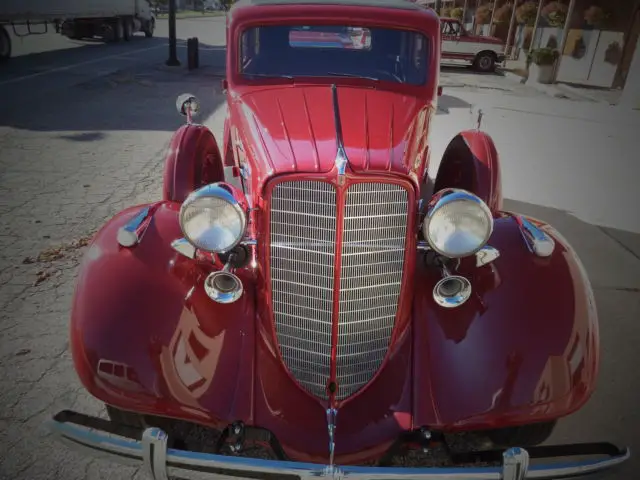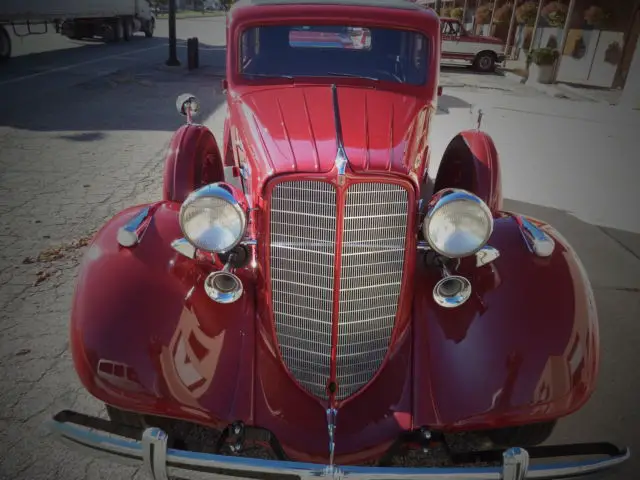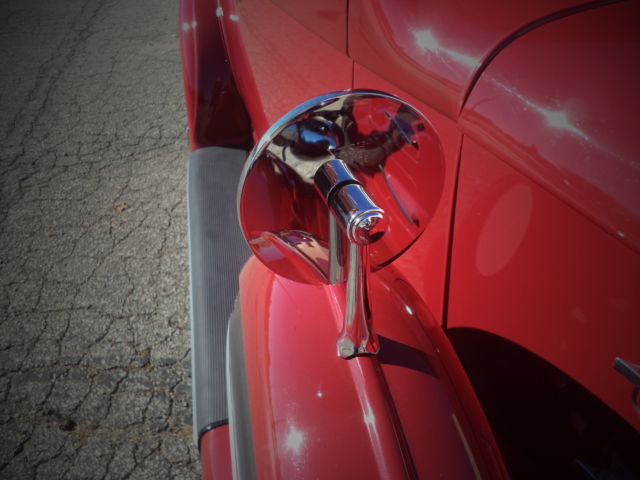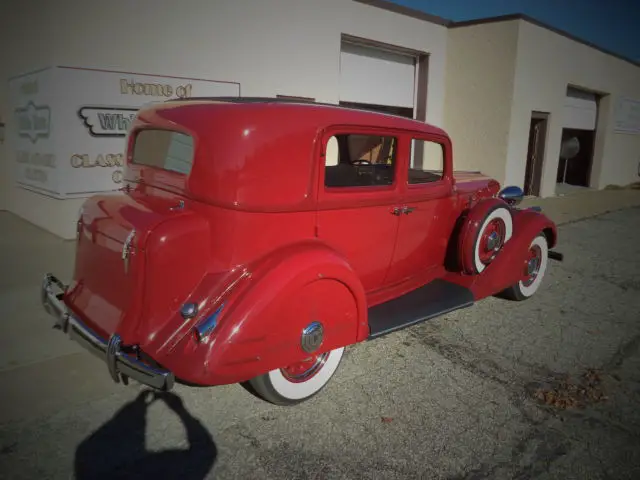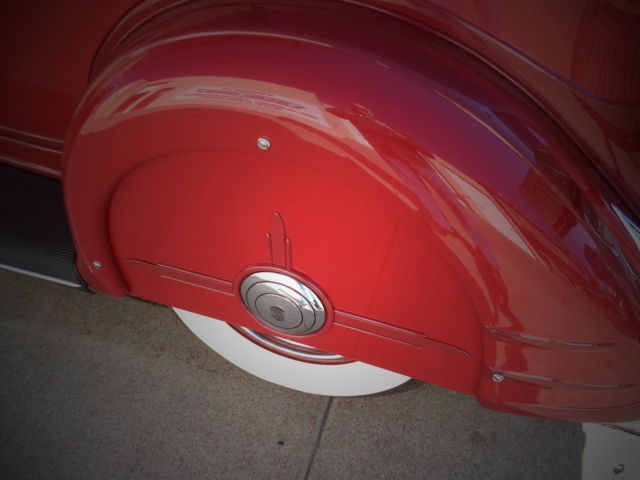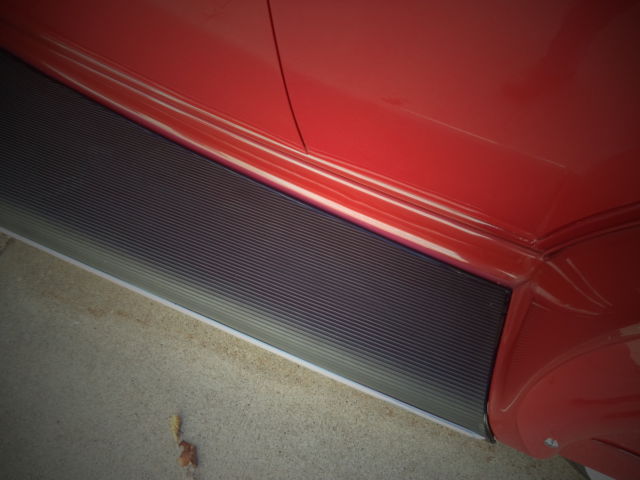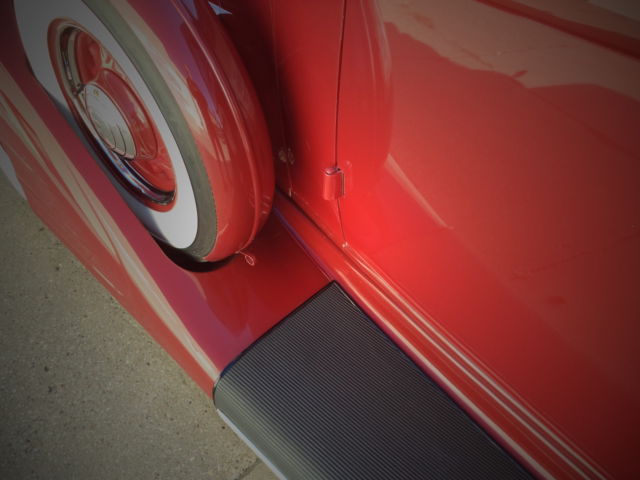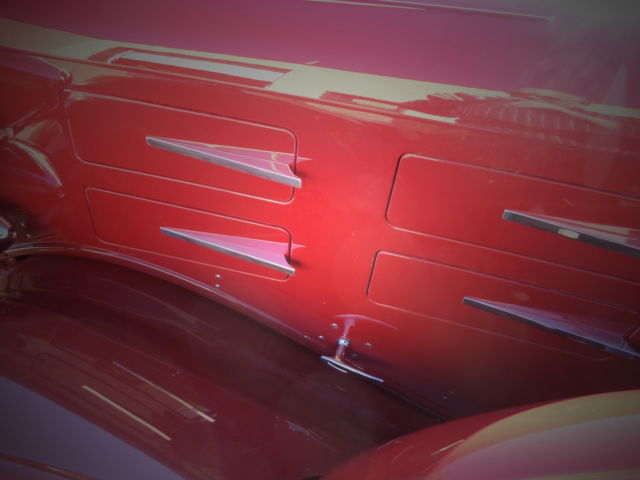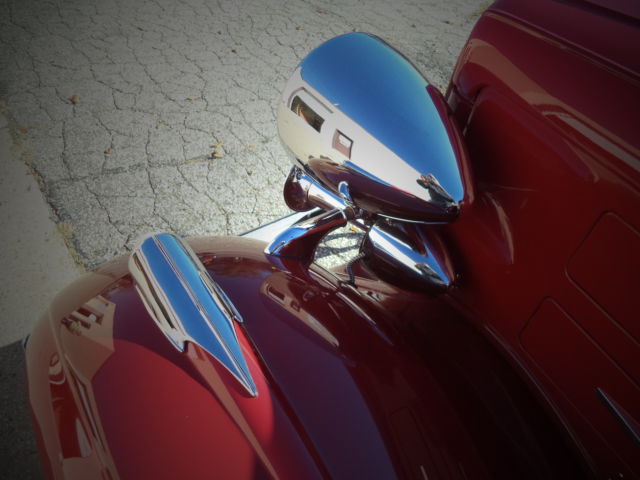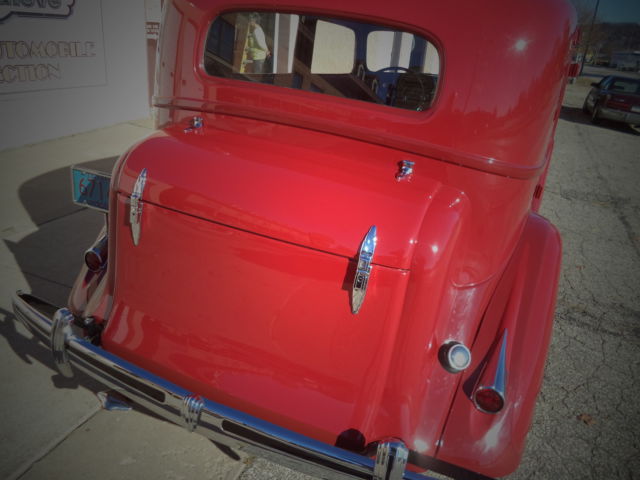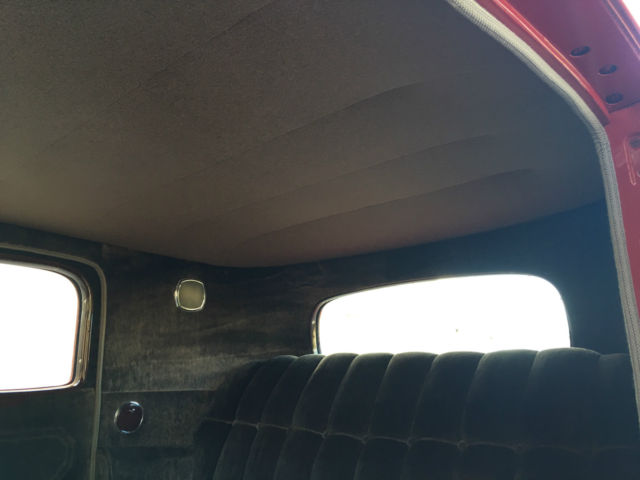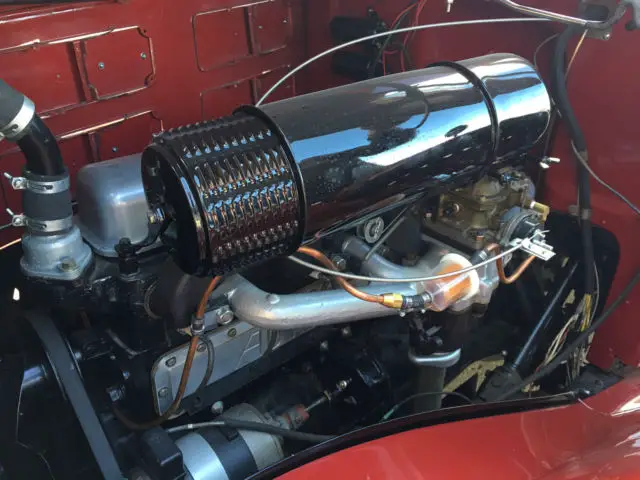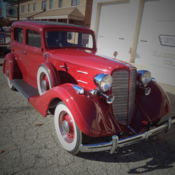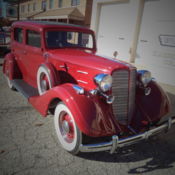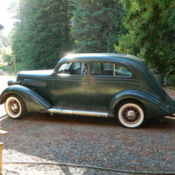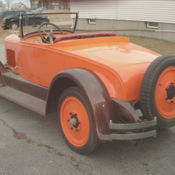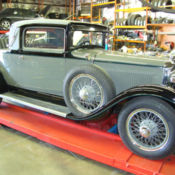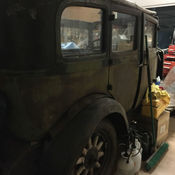1934 Nash Advanced 8 4-Door 5-Passenger Sedan Design by Count Alexis de Sakhnoff
| Condition: | Used |
| Make: | Nash |
| Model: | Advanced 8 |
| SubModel: | 1280 Sedan |
| Type: | Count Alexis De Sakhnoffsky |
| Year: | 1934 |
| Mileage: | 72,650 |
| VIN: | B71717 |
| Color: | Red |
| Engine: | Straight 8 260.8 cu. in. |
| Cylinders: | 8 |
| Transmission: | Helical 3-Gear |
| Drive type: | RWD |
| Interior color: | Brown |
| Vehicle Title: | Clear |
| Item location: | La Crosse, Wisconsin, United States |
| Extras |
|
Dual-Downdraft Carburetor, Single-Plate 9-7/8", Semifloating Axel, Spiral-Bevel Differential |
| Listed by | Private seller |
Description of 1934 Nash Advanced 8 |
|
1934 Nash Advanced 8 Model 1280 4-Door 5-Passenger Sedan This Nash sports a straight-8, overhead-valve, nine-main-bearing engine. Its 8 cylinders fire on 16 spark plugs. The car featured a 3-speed transmission. White Glove Collection purchased this car from a IRS sale after it was seized from the former owner. Because of this we don't have the vehicle's complete history, but we can share with you what we've learned about the car and what work we've done. It was evident before we purchased the car that it was in the late stages of a new restoration. The body work was complete, the paint was pristine, the engine was beautifully detailed, it sported new exhaust, and most of the chrome was redone. Once we had the Nash in our shop, we inspected the engine by removing the rocker panels and found that it was very clean and had obviously been overhauled recently. We also found the carburetor had been replaced with what appears to be a Carter two-barrel. The carbs that came on Nash's like this one were notoriously bad white metal and are known to deteriorate over time. We decided to leave this replacement carburetor as-is considering how well the car performs with it. The interior of the car needed to be finished when we purchased the car, so we had the headliners, door linings, carpet, and seats completely redone. We also detailed the dashboard, including replacing the bezel around the key, as these tend to harden and deteriorate over time. This bezel is now restored to its original condition, including the light that shines through the bezel when the car is running. We also fabricated the step plates, which are visible in the video of the car displayed here, to finish out the interior. To finish the exterior of the car we added side mount mirrors which we cast in brass and chrome ourselves (see our listings for mirrors under eBay user bloomie48), straightened the hubcaps, fabricated a strip hinge for the hood, and rebuilt the headlights and horns. The car has been test driven in town and on the highway and has been found to run well and shift smoothly. For safety, we've added directional signals using the cars original lights wired into signal switch attached to the steering column. These are a common and removable solution for adding signals to classic vehicles. Video Tour of the 1934 Nash Advanced 81934 Nash Advanced 8 with Underside View About White Glove CollectionYou can trust in the quality of this 1934 Nash because it comes from White Glove Collection. We're a world-renown name in the classic car business with customers and clients from Germany to Australia, Bulgaria to Japan, and all cross the United States. Learn more about our showroom and restoration shop as well as our original and reproduction parts business by watching the short video below. Take a Tour of White Glove Collection History of the de Sakhnoffski NashThis singular example of the art deco school was designed by Count Alexis de Sakhnoffski, the Russian-born son of Prince Vladimir "Sakhnovsky." By the early 1920s, de Sakhnoffski had become known in Europe as a designer of ultra-modern, streamlined sports cars. This put his design skills in high demand by 1929, when de Sakhnoffski moved to America and began working for several Hayes Auto Body customers, including Auburn, Cord, and American Austin. The L-29 Cord body he designed for himself won the Grand Prize at the 1929 Monaco Concours d'Elegance and the Grand Prix d'Honneur at the 1929 Beaulieu Concours. De Sakhnoffsky would soon maintain offices in Atlanta, Chicago, Grand Rapids, Milwaukee, New Canaan (Conn.), New York City, and Philadelphia. His design work extended well outside of automobiles, to related fields such as trailers for Fleetwheels, boats for Feather-Craft, and Chrysler exhibit at 1933 World's Fair; to areas far afield from automobiles, such as interiors for the Earl Carroll Theatre, radios for Emerson, refrigerators for Kelvinator, bicycles for Murray, movie sets for Hal Roach, and advertisements for Revlon. During his lifetime he was awarded 38 US patents and had his illustrations appear in Conquete de l'Air, Esquire, L'Equipement Automobile, Motor Trend, Psyche, and Skyways. As de Sakhnoffski's fame grew through the 1920s, so did the demand for Nash automobiles, with production swelling to 138,137 by 1928. As Nash grew, so did its partners in the coach building business. By 1928, Seamans, a Milwaukee company partly owned by Nash, employed 6,000 workers producing 800 bodies a day. However, after the stock market crash of 1929 demand for automobiles began to decline. The global economy continued to slow until 1933, a year that saw over 100 auto worker strikes in the United States. Among those strikes was a walk-out of 200 Nash assembly line workers in Kenosha, Wisconsin. In response, Charles W. Nash locked out all 3,000 unionized workers at the Kenosha and Racine plants. After several walkouts, management refusing to comply with union conditions, and eight weeks of mediation, Nash was forced to give his workers a raise of 17 percent, representing one of the first major union victories of the 1930s. It also made for one of the worst financial years in the history of the Nash Motors Company, making 1933 the first year Nash ever lost money. This made 1934 a year that found Nash and Seamans, its body maker, desperate to sell cars and looking for a new design. The same year, Alexis de Sakhnoffski, having been hired as the new technical editor at Esquire, where he served until the 1960s, was more broadly-known than ever before. This is what led to Nash and de Sakhnoffski forming an historic partnership that would create one of the most art deco cars of all time. The "Speedstream" body design would transform the look of Nash completely, introducing bullet-shaped headlights, horizontal hood ribs, streamlined accents, rear wheel spats, and built-in luggage trunks with a full beaver-tail rear end. This incredibly design,however, would last only one year, as the Speedstream styling of 1934 didn't stop the losses at Nash. Instead, the company suffered $1.6 million in additional losses, resulting in yet another redesign in 1935. This design, dubbed the "Aeroform" saw the incredible design of 1934 abandoned in favor of a all-steel, one-piece body. This helped to stem Nash's losses, cutting their deficit down to $610,000, making Nash profitable again by 1936, but it would never revisit the design zenith it reached in 1934. This confluence of historical circumstances, the depression, the economic nadir of 1933, the walkouts, strikes, and lock-outs, and the unlikely rise of a Russian-born aristocrat to the height of international design world would make the 1934 Nash an historical perfect storm. It represents one of the narrowest windows for a design style amongst the larger classic producers of automobiles. That's what makes this car so special, the design was limited to 1934, a single year, and would never happen again. It is truly a moment out of time. Please call Cord Blomquist at 202-615-0600 to discuss the terms of sale. |
 Home
Home Contact us
Contact us NEWEST CARS
NEWEST CARS SELL YOUR CAR
SELL YOUR CAR FAQ
FAQ